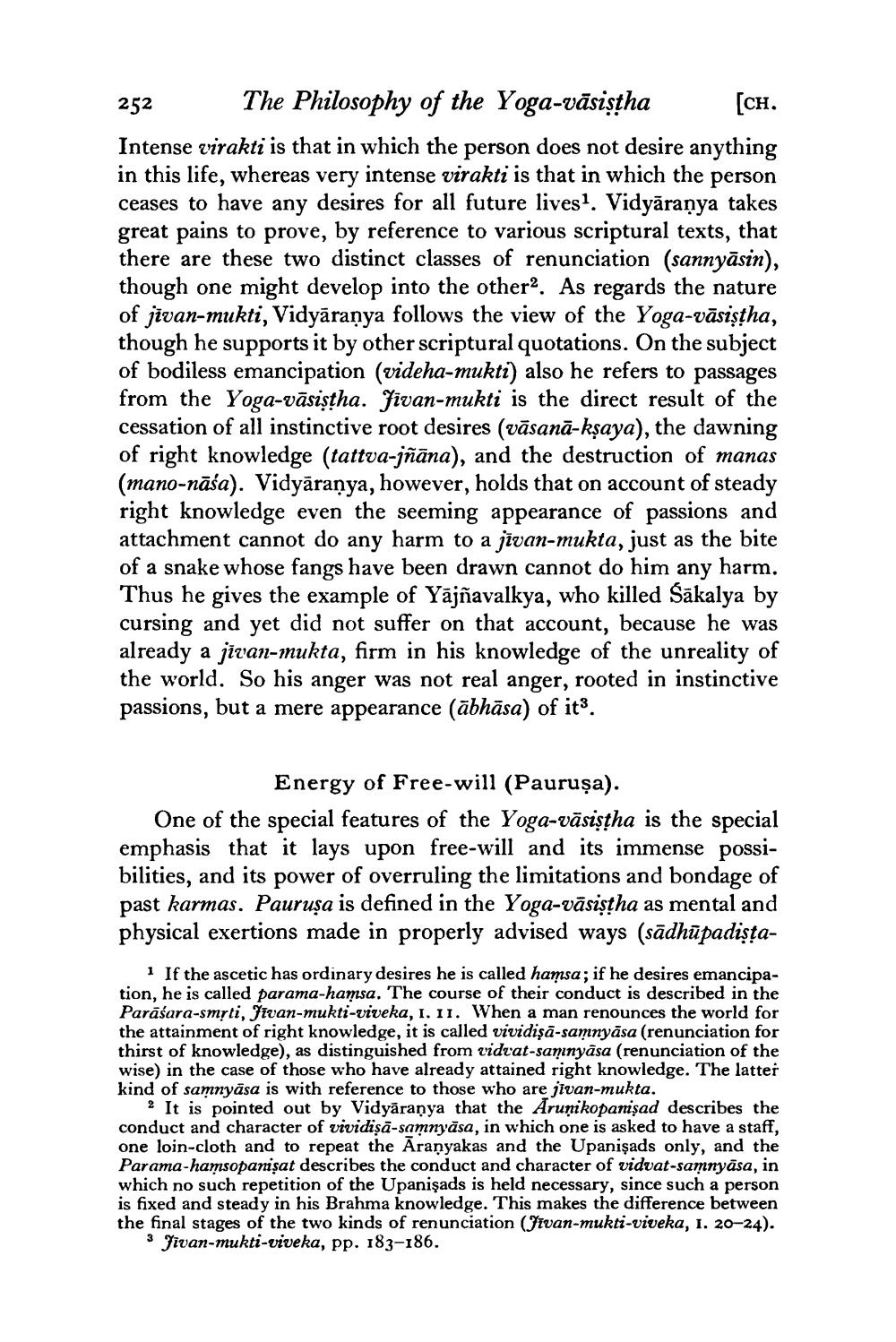________________
252
The Philosophy of the Yoga-vāsistha [cH. Intense virakti is that in which the person does not desire anything in this life, whereas very intense virakti is that in which the person ceases to have any desires for all future lives?. Vidyāraṇya takes great pains to prove, by reference to various scriptural texts, that there are these two distinct classes of renunciation (sannyāsin), though one might develop into the other. As regards the nature of jivan-mukti, Vidyāraṇya follows the view of the Yoga-vāsiştha, though he supports it by other scriptural quotations. On the subject of bodiless emancipation (videha-mukti) also he refers to passages from the Yoga-vāsista. Jivan-mukti is the direct result of the cessation of all instinctive root desires (vāsanā-kşaya), the dawning of right knowledge (tattva-jñāna), and the destruction of manas (mano-nāša). Vidyāraṇya, however, holds that on account of steady right knowledge even the seeming appearance of passions and attachment cannot do any harm to a jīvan-mukta, just as the bite of a snake whose fangs have been drawn cannot do him any harm. Thus he gives the example of Yājñavalkya, who killed Sākalya by cursing and yet did not suffer on that account, because he was already a jivan-inukta, firm in his knowledge of the unreality of the world. So his anger was not real anger, rooted in instinctive passions, but a mere appearance (ābhāsa) of it3.
Energy of Free-will (Pauruṣa). One of the special features of the Yoga-vāsiştha is the special emphasis that it lays upon free-will and its immense possibilities, and its power of overruling the limitations and bondage of past karmas. Pauruşa is defined in the Yoga-vāsiştha as mental and physical exertions made in properly advised ways (sādhūpadişța
1 If the ascetic has ordinary desires he is called hamsa; if he desires emancipation, he is called parama-hamsa. The course of their conduct is described in the Parāśara-smrti, Jivan-mukti-viveka, 1. 11. When a man renounces the world for the attainment of right knowledge, it is called vividişā-samnyāsa (renunciation for thirst of knowledge), as distinguished from vidvat-samnyāsa (renunciation of the wise) in the case of those who have already attained right knowledge. The latter kind of samnyāsa is with reference to those who are jivan-mukta.
2 It is pointed out by Vidyāranya that the Aruni kopamşad describes the conduct and character of vividişā-samnyāsa, in which one is asked to have a staff, one loin-cloth and to repeat the Aranyakas and the Upanişads only, and the Parama-hamsopanişat describes the conduct and character of vidvat-samnyāsa, in which no such repetition of the Upanişads is held necessary, since such a person is fixed and steady in his Brahma knowledge. This makes the difference between the final stages of the two kinds of renunciation (Jivan-mukti-viveka, 1. 20-24).
3 Jivan-mukti-viveka, pp. 183-186.




